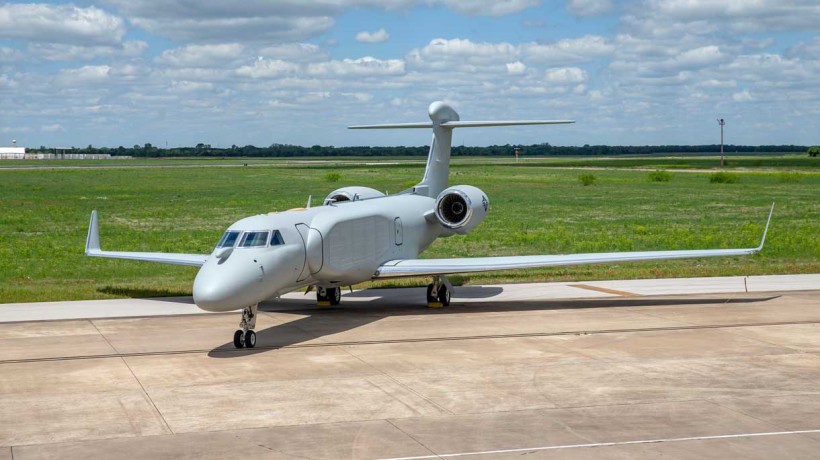BAE Systems and L3Harris Technologies has delivered the first of 10 EC-37B Compass Call aircraft to the US Air Force for combined developmental and operational testing. It is a significant step in advancing the Air Force's four-decade mission of employing electromagnetic attack (EA) capabilities.

All About the EC-37B Compass Call Aircraft
This system aids US and coalition forces by disrupting enemy communications, radars, and navigation systems while suppressing enemy air defenses. Mission system prime BAE Systems produces the Compass Call Airborne Electromagnetic Attack system.
This essential technology hampers the transmission of crucial information among adversaries, weapon systems, and command-and-control networks.
L3Harris, the platform integration prime, has integrated the EC-130H Compass Call mission system into a modern Gulfstream G550 business jet, enhancing speed, endurance, and high-altitude operation for increased survivability and range, thereby delivering superior EA effects.
Dave Harrold, Vice President and General Manager at BAE Systems, emphasized the significance of this delivery, saying, "The delivery of the first EC-37B Compass Call is a major milestone for our customer's electromagnetic attack capabilities. We take pride in delivering this critical EW capability to keep the US at the vanguard for defense and deterrence."
Jason Lambert, President of Intelligence, Surveillance, and Reconnaissance at L3Harris, highlighted the achievement of migrating the Compass Call mission equipment from the larger EC-130H and seamlessly integrating it into the Gulfstream G550 platform.
This transition marks a pivotal moment as the Air Force phases out its 40-year-old EC-130H fleet, ushering in the advanced EC-37B to perpetuate its crucial electromagnetic warfare mission.
Read Also: US Air Force Invests $235 Million for Startup to Develop New Jet with Blended-Wing Body
Northrop Grumman and the US Air Force Reveal New Images of B-21 Raider Nuclear Stealth Bomber
In related news, Northrop Grumman and the US Air Force have provided the public a glimpse of the progress of the B-21 Raider by releasing new images of the latest nuclear stealth bomber as it starts ground engine runs at Northrop Grumman's Palmdale, California, facility.
This development is a substantial leap toward the aircraft's flight testing phase, solidifying the B-21 Raider's status as a trailblazing sixth-generation aircraft, heralding a new era in aeronautics. Engine testing is a pivotal stage in the program, showcasing the B-21 Raider's preparedness for the challenges ahead.
This cutting-edge aircraft is engineered to operate at the forefront of modern warfare, equipped with state-of-the-art stealth technology, advanced networking capabilities, and a versatile open systems architecture.
The B-21 Raider is set to redefine the capabilities of the US bomber fleet. Its unveiling on December 2 marked a momentous occasion for Northrop Grumman and the Air Force.
Scheduled to replace the B-1B, B-2, and B-52 aircraft by 2050, the B-21 Raider will solidify its position as the cornerstone of the Air Force bomber fleet, bolstering the nation's capacity to tackle the most demanding military objectives.
The aircraft's name, paying homage to the historic Dolittle Raiders of World War II, is a testament to the enduring legacy of their audacious raids.
Related Article: US Air Force Awards $950 Million Advanced Battle Management System Contract to ARC









